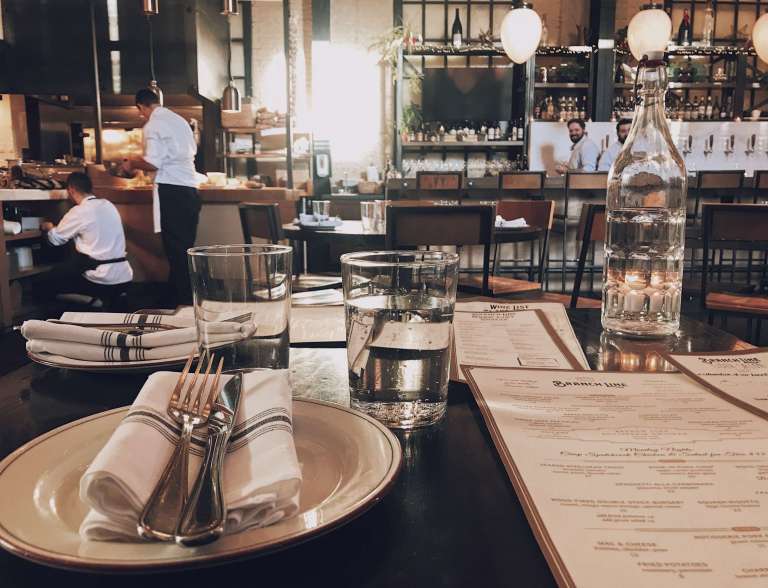Member only content
Savour is proudly brought to you by

-
Let’s Feed the Future of Tourism by Telling New Zealand’s Food Story
-
7 Essential Strategies for Maximizing Staff Retention in the Hospitality Industry
-
Checking it Twice – Health and Safety Considerations for your Work Function
-
Why the hospitality industry supports a return to the office
-
Surviving Financial Strain: Restructuring Strategies for NZ Hospitality Employers
-
Rent Reviews Unveiled: The Ultimate Guide for Hospitality Tenants
-
The Vital Role of Reputation Management in the Hospitality Industry

Savour
The Magazine of the Restaurant Association of New Zealand
The Luxury Mindset: Breaking Free from Commodity Pricing in the Restaurant Industry
11 Apr 25This article was written by Michael Tood, marketing manager from the Restaurant Association, based on the Keynote Speech from Chip Klose, International Restaurant Coach and Host of the Restaurant Strategy Podcast, that was given at the 2023 Hoso Hui.
Reframing Your Business to Create Extraordinary Value
The restaurant industry often falls into the trap of commodity thinking – a self-imposed mindset that leads to razor-thin profit margins and constant anxiety over pricing. But what if there was a better way? What if restaurant owners could break free from these constraints and build more profitable businesses by adopting what Chip Klose calls a “luxury mindset”?
To be clear, we’re not talking about luxury goods. We’re talking about a fundamental shift in how we perceive and position what we do. The biggest struggle in our industry stems from spending all our time in a commodity mindset when what we do is truly extraordinary.
Understanding the Commodity Mindset
A commodity, by definition, exists when all things are equal. When products or services are perceived as interchangeable, consumers make decisions based on just three criteria: familiarity, convenience, and price.
Think about when you need to buy petrol for your car. If you’re running low, you’ll stop at the nearest station (convenience). If you have options at an intersection, you’ll likely choose the one with the lowest price. If you have the luxury of time, you might go to a brand you prefer (familiarity).
This same dynamic applies to how many consumers select restaurants. When they view dining options as essentially interchangeable – pizza is pizza, sushi is sushi – they default to making decisions based on what’s familiar, convenient, or cheapest.
Playing the commodity game is like swimming in shallow water with dozens of other sharks, all fighting for the same fish. It’s a brutal competition with minimal rewards.
Embracing the Luxury Mindset
Luxury, by definition, is “a condition of abundance, of great ease and comfort, and indulgence.” Let’s focus on that last word: indulgence.
What we offer in restaurants is a luxury. Dining out is an indulgence that generations before us could not enjoy or even fathom. Someone from a hundred years ago who was transported to contemporary times would be astonished by our restaurant culture.
We can feed a family of four relatively inexpensively by going to the supermarket and cooking at home. There is no practical necessity to pay someone else to shop for ingredients, prepare them, serve us, clean up afterward, and manage the entire experience. Yet people choose this indulgence regularly, and demand for it continues to grow.
The Power of Differentiation
Consider Hermès and their famous Birkin bag. Starting at $35,000, these handbags sell for approximately 40 times what they cost to produce. Customers not only are willingly pay this premium, but often wait on lengthy lists or line up outside stores for the privilege of spending this extraordinary amount.
Why? Because they literally cannot get anything like it anywhere else. The Birkin bag is one of a kind.
This principle applies to restaurants as well. What if your restaurant offered something people couldn’t get anywhere else? That’s how you start untethering yourself from competitors, price anchors, and traditional margins.
Redefining Transactions, Value, and Price
To adopt the luxury mindset, we need to reexamine how we think about three fundamental concepts:
1. Transactions
In restaurants, transactions last a long time – often two hours or more. Customers expect to be served and sold to throughout this extended period. Most importantly, these transactions involve much more than just money.
On the restaurant side, we’re providing not just food but also our experience, expertise, a beautiful dining room, service, preparation, cleanup, and genuine human connection. On the customer side, they’re paying us with their three most precious resources: time, attention, and trust.
2. Price
Price isn’t just the dollar amount on the menu. It encompasses everything being exchanged in the transaction. When we think about price this way, it becomes clearer why we should feel confident charging appropriately for the full experience we provide.
3. Value
Value equals worth minus price. A transaction works when both sides win – when restaurants profit and customers receive something worth more than what they paid.
The space between what we charge and what it’s worth to the guest – that’s where value lives. To maximize this equation, we need to understand our customers deeply and what our offering is truly worth to them.
Putting the Luxury Mindset into Practice
How do you adopt this luxury mindset and apply these lessons to your business? Ask yourself this critical question:
What would I have to do to get people to go out of their way for my product and pay more for it than they typically would?
The goal is to reach a place where you have no real competitors – where your restaurant offers something people simply cannot get anywhere else. This could be through unique stories, exceptional service touches, distinctive preparation methods, or other forms of differentiation.
As Seth Godin provocatively asks: What would you do if tomorrow you had to charge twice as much for your product? What would you have to change so that in the eyes of the consumer, they saw the value?
The restaurants that will thrive in the future are those that can answer this question confidently.
Building Differentiation Through Storytelling
One powerful way to differentiate your offering is through storytelling. At Olmsted in Brooklyn, Chef Greg Baxtrom includes not just ingredients and preparation methods in staff training materials, but also “cool stories to tell” about each dish.
For example, one signature dish was created from reclaiming carrot scraps that would otherwise have been discarded – a sustainability story that adds immense value beyond the food itself. Their tea service includes a small hourglass timer to ensure proper steeping – a small touch that creates a memorable moment.
Chef Baxtrom’s rule was that every diner should encounter at least three of these “story moments” during their meal. These become talking points that diners share with others, creating powerful word-of-mouth marketing and a perception of unique value.
The Future of Pricing
Dynamic pricing – charging different rates based on demand periods – is already transforming some segments of the restaurant industry. High-end restaurants like Alinea in Chicago have implemented ticket systems where Saturday night dinners cost substantially more than weeknight meals.
Just as airlines, hotels, and other industries have embraced this model, restaurants could increasingly adopt systems that optimize revenue based on demand. This approach recognizes that the value proposition changes depending on circumstances – people will pay more for peak times because that convenience itself has value.
Final Thoughts
Your restaurant can break free from commodity thinking by embracing the luxury mindset. What you offer is an extraordinary indulgence. By focusing on creating something unique and developing compelling stories around your offerings, you can charge what your creations are truly worth.
Stop being tethered to traditional margins and competitors’ prices. Instead, ask: what would make people go out of their way and happily pay more for my experience? Answer that question, and you’ll transform your business.
Chip Close is a restaurant coach based in New York City who works with clients worldwide through his mastermind program. He hosts the Restaurant Strategy podcast, producing two episodes weekly featuring conversations with restaurant entrepreneurs. With 23 years of industry experience, primarily in fine dining, Chip helps restaurant owners build more profitable businesses by rethinking their approach to value and pricing.
 Member only content
Member only content
Savour is proudly brought to you by

-
Let’s Feed the Future of Tourism by Telling New Zealand’s Food Story
-
7 Essential Strategies for Maximizing Staff Retention in the Hospitality Industry
-
Checking it Twice – Health and Safety Considerations for your Work Function
-
Why the hospitality industry supports a return to the office
-
Surviving Financial Strain: Restructuring Strategies for NZ Hospitality Employers
-
Rent Reviews Unveiled: The Ultimate Guide for Hospitality Tenants
-
The Vital Role of Reputation Management in the Hospitality Industry